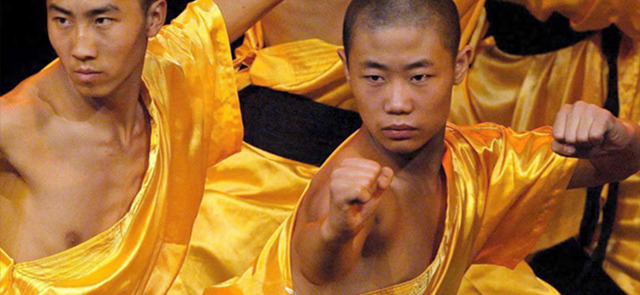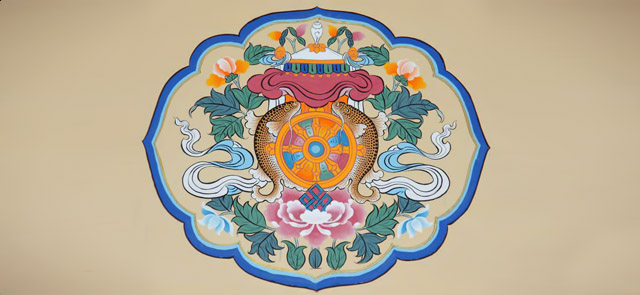At the western side of the Mahabodhi temple known as "the monastery of the great enlightenment", in Bodhgaya, stands a large and historic peepal tree, the Bodhi tree, under which Shakyamuni Buddha, then known as Gautama, attained enlightenment some 2500 years ago. Gautama, had been practicing austerities for six years in the area of the Nairanjana river near Bodhgaya. Finally understanding that this could not lead to realisation, he abandoned his austerities and in the nearby village of Senani the Brahmin girl Sujata offered him Payasa [Sweetened milk-rice]. Strengthened by this, he took some kusha grass for a mat and sat under the peepal tree facing east. He resolved not to rise until he attained enlightenment.
As he sat in deep meditation, Mara, Lord of Illusion, symbolising the delusions of one's own mind tried tirelessly to distract him from his purpose. Gautama then touched the earth, calling it to bear witness to the countless lifetimes of virtue that led him to this place of enlightenment. The earth shook confirming the truth of his words. Mara unleashed his army of demons to distract and tempt him from his purpose, but Gautama triumphed over the inner obstacles and the power of his compassion transformed the demons' weapons into flowers. His mind was utterly subdued.
For seven days after the enlightenment, Buddha continued to meditate under the tree without moving from his seat. Another week passed in walking meditation, and for a third the Buddha contemplated under the Bodhi tree.
The earliest records on the tree are in the 'Kalingabodhi Jataka' which gives a vivid description of the tree and the surrounding area prior to the enlightenment, and the "Narrative of Asoka" which relates the story of King Asoka's conversion to Buddhism. His subsequent worship under the sacred tree apparently angered his queen to the point where she ordered the tree to be felled. Ashoka then piled up earth around the stump and poured milk on its roots. The tree miraculously revived and grew to a height of 37 metres. He then surrounded the tree with a stone-wall some three meters high for its protection.
Asoka's daughter Sangamitta a Buddhist nun, took a shoot of the tree to Sri Lanka where the King, Devanampiyatissa planted it at the Mahavihara monastery in Anuradhapura. It still flourishes today and is the oldest continually documented tree in the world.
In 600AD, King Sasanka, again destroyed the tree. The event was recorded by Xuanzhang, along with the planting of a new Bodhi tree sapling by King Purnavarma in 620AD. At this time, during the annual celebration of the second month of spring, thousands of people from all over India would gather to anoint the roots of the holy tree with perfumed water and scented milk, and to offer flowers and music. Xuanzhang wrote "The tree stands inside a fort like structure surrounded on the south, west and north by a brick wall. It has pointed leaves of a bright green colour. Having opened a door, one could see a large trench in the shape of a basin. Devotees worship with curd, milk and perfumes such as sandalwood, camphor and so on."
Much later the English archeologist Cunningham records, "In 1862 I found this tree very much decayed; one large stem to the westward with three branches was still green, but the other branches were barkless and rotten. I next saw the tree in 1871 and again in 1875, when it had become completely decayed, and shortly afterwards in 1876 the only remaining portion of the tree fell over the west wall during a storm, and the old peepal tree was gone. Many seeds, however, had been collected and the young scion of the parent tree were already in existence to take its place."
The present Bodhi tree is most probably the fourth descendant of that original tree to be planted at this site. It still performs a very important role to Buddhists of all traditions, being a reminder and an inspiration, a symbol of peace, of Buddhas' enlightenment and of the ultimate potential that lies within us all.











